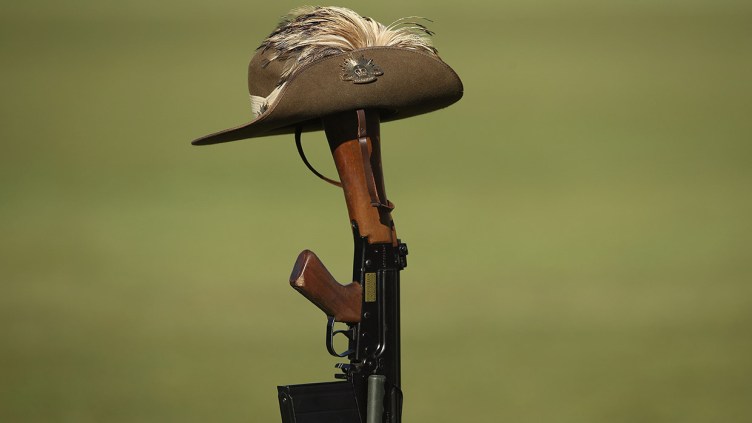Most Australian football fans would do anything to have played for their country, but probably not this.
Picture yourself in Australia 1967 – Harold Holt was Prime Minister of the country, postcodes and the $5 note had just been introduced and a young singer named Johnny Farnham had recently broken through to the big time with his hit single, ‘Sadie’.
Life in Australia was simple – for starters, the median house price in Western Australia was just $11,077!
However, there was a much darker reality occurring 4800 kilometres north of Perth.
Australia’s ally, the United States, was determined to stop the spread of communism in Indochina and had set its sights on Vietnam since the early ‘60s.
In 1965, we duly followed America into the South East Asian conflict.
In ten bloody years, an estimated 1.4 million people were killed in Vietnam. 521 of the estimated 60,000 Australians serving in the country lost their lives in the war.
Vietnam during the late 1960s was arguably the most dangerous place on Earth.
Yet in 1967, our Socceroos were sent to an invitational tournament in the middle of Saigon just two months before the infamous Tet Offensive of January 1968.
Ahead of Remembrance Day this Sunday, we tell the story of how the Socceroos won their first international trophy in the middle of the Vietnam War.
“Going into the Unknown”

The Socceroos were a young side coached by ‘Uncle’ Joe Vlatsis, headlined by the up-and-coming talents of Ray Baartz, Johnny Warren and Attila ‘Atti’ Abonyi. As the Australian legend Baartz quoted to The Guardian Newspaper in 2013, “We really didn’t know what to expect – we knew there was a war going on there but it never did at any stage feel like we were going into a warzone.”
“Once we got there, it was a real eye-opener.”
In plain sight of the Viet Cong
Saigon was under siege.
The team could hear the guns and artillery firing in the distance through a run-down city teeming with soldiers. The training pitch was a local park surrounded by frighteningly close land-mine littered roads. Often the team completed part of the sessions on the roof of their hotel.
Throughout the tournament, the Socceroos were warned not to befriend the Americans as they would were likely to be targeted by the guerrilla enemy fighters, the Viet Cong. Luckily for the Socceroos, many Viet Cong fighters attended their football matches, meaning the NVA (North Vietnamese Army) and Viet Cong left the Cong Hua Stadium alone.
Before and after their training sessions, the Socceroos would eat with the Australian troops overseas at one of the bases in Saigon. At the end of the meal, the Socceroos would head for their treacherous training pitch, while the Australian soldiers instead headed to the battle zone. The two groups of young men made friendships and the Socceroos invited the soldiers to their matches; an invitation the predominantly rugby league fans gladly took up.
The Group Stage – torrential rain, big crowds and a storm of rock-throwing
It’s been quoted across many accounts that the 1967 Vietnam National Day Soccer Tournament was the catalyst that galvanised the Socceroos youngsters to eventually qualify for the FIFA World Cup in Germany in 1974.
Perhaps that’s easy for us to understand as fans, especially when the first action of the tournament was to examine the Cong Hua Stadium for landmines.
An estimated 20,000 were in attendance for Australia’s first game; an ANZAC derby against New Zealand.
It was a goalfest.
Attila Abonyi’s hat-trick led the highly impressive Socceroos to a 5-3 victory on a muddy pitch, but unbelievably, it proved to be the one of the least eventful matches of the group.
Two days later, Australia faced South Vietnam among a throng of 30,000 heavy-gambling Vietnamese fans. A 24-year-old Johnny Warren proved to be the match winner, scoring the decisive goal in the 35th minute and sending the Vietnamese crowd into complete silence.
After a 1-0 victory, the team waited for 30 minutes in the dressing rooms at full time, fearful of fan vengeance. Upon exiting, all hell broke loose as a shower of rocks smashed against the team bus and fans attacked the vehicle.
As Abonyi told The Guardian in 2013, “It was pretty frightening at the time. This was meant to be a friendly game! It wasn’t very friendly, I can tell you.”
Abonyi scored another hat-trick against Singapore in the final group game to keep Australia’s perfect record alive with a 5-1 victory and the Socceroos were through to the semi finals.
An ugly semi-final; a brawl, teargas, police and the army
Malaysia provided the opposition in the semi-finals and with the scores locked at 0-0, Socceroos winger Tom McColl was upended in a challenge. A Malaysian player kicked him on the ground, sparking a full melee between both teams that required the local police and military to separate the teams. Brawls broke out in the crowd and teargas was required to end the fighting.
When it resumed, the tense and vicious affair was finally settled in extra time, 20-year-old Ray Baartz’s effort winning the match for the Socceroos in the 117th minute.
Triumph in front of our troops – a remarkable Final
Despite the violence that followed their second match, the Socceroos began to become popular in Saigon. Many other teams understandably stayed put in their team hotels throughout the tournament, but the Socceroos enjoyed venturing into Saigon and meeting locals in the city.
However the Final almost did not go ahead. The Australian troops, who supported the Socceroos so strongly through the tournament, were initially not allowed into the ground. The Socceroos threatened to boycott and eventually the authorities relented and the troops were permitted to enter the Cong Hua Stadium.
Australia duly emerged to be greeted by a cheering South Vietnamese crowd. The Socceroos were bewildered but pleasantly surprised; their opponents South Korea, in contrast, were booed.
The heat of Vietnam, however, began to take its toll on the Australians who had been in the war zone subsisting on unhealthy diets for a week at this point.
The South Koreans took advantage, scoring in the first minute via Lee Young Kewn. The Socceroos had to dig deep and in did so, levelling things up via a splendid individual goal from Billy Vojtek on 36 minutes.
Johnny Warren and Attila Abonyi went on to add further goals, with South Korea only able to muster a single response from Huh Yoon Jung and the tournament was won.
Aftermath
The Socceroos continued on for a tour of South East Asia, in which they defeated Indonesia, Malaysia and Singapore in their home countries. They finished their trip with nine wins from nine matches, an exceptional effort given that six of those games were played amidst the chaos of war, brawls, rock-throwing, torrential rain, muddy pitches and a diet of canned food over the course of just one week.
Just two months later, on January 30 1968, during the Vietnamese New Year known as Tet, the NVA and Viet Cong entered and besieged the city of Saigon. Eventually coming to be known as the Tet Offensive, the siege was the bloodiest period of the Vietnam War, with over 50,000 soldiers and 14,000 civilians killed in eight hellish months.
The Socceroos missed it by 78 days, but our soldiers stayed back and fought.
Legacy
The North Vietnamese would, of course, eventually capture Saigon and rename it Ho Chi Minh City as the South joined the North to unite as a single, unified Vietnam.
Today, Vietnam and Australia are allies, with many Vietnamese families emigrating to Australia and many Australians visiting Vietnam for holidays. Indeed, the Vietnamese Prime Minister, Nguyen Xuan Phuc, visited Sydney earlier this year to mark 45 years of bilateral relations.
Through the atrocity of war, Australia’s visit and triumph in Saigon was another mark of the special relationship between football and our servicemen and women.
We will remember them.
#OneGlory




